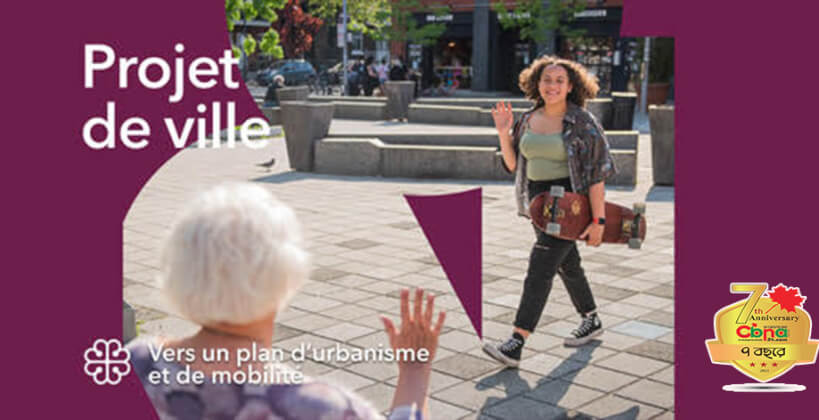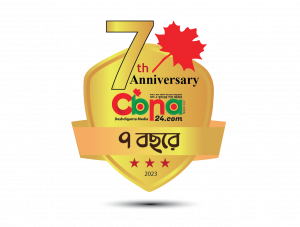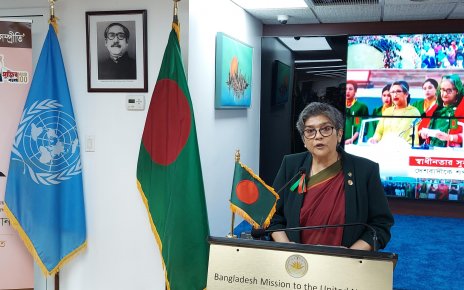Saint-Laurent Voices its Opinion for a Greener, Healthier, More Inclusive, Attractive and Innovative City
Saint-Laurent, October 12, 2022 – Saint-Laurent, represented by its Mayor, Alan DeSousa, voiced its opinion to the Office de consultation publique de Montréal on October 12 as part of the consultation process leading to the new Land Use and Mobility Plan that will shape Montréal’s future until 2050.
Saint-Laurent has called for a greener, healthier, more inclusive, attractive and innovative city by providing the details of its recommendations to achieve this objective through 10 issues raised.
Quote
“I’m pleased to have been able—within this OCPM consultation—to relay the issues and challenges identified by Saint-Laurent. This is an important step in helping to make Montréal a modern city that is serenely looking toward its future as far ahead as 2050. In particular, we want to include governance issues in the paths to improvement in order to complement the objectives set with concrete means of implementation that will, in turn, ensure residents’ support and the mobilization of all public and private stakeholders. These means should include mechanisms for consultation, collaboration and financing by integrating all levels of government.”
Alan DeSousa, Mayor of Saint-Laurent
Details
On October 12, Saint-Laurent Mayor Alan DeSousa gave the details of the opinion that had previously been submitted in the form of a 13-page written document in order to contribute to the preliminary document entitled “Projet de Ville : vers un plan d’urbanisme et de mobilité” (City project: towards a land use and mobility plan).
The public consultation on this document, prepared by the Service de l’urbanisme et de la mobilité, will be the beginning of the conversation with residents—a conversation that is necessary to develop the land use plan.
Ecological transition is one of the issues and challenges highlighted by Saint-Laurent. In order for Montréal to be a carbon neutral city by 2050, a concrete schedule of concrete measures should be defined. A number of examples of Saint-Laurent’s bylaws that promote sustainable development could, in fact, be extended to the entire city, such as those concerning the development of sustainable parking lots or green or white roofs.
Saint-Laurent is also recommending that means of implementation and funding mechanisms be added, whether it be for net zero energy consumption or the integration of ecological rainwater management in new or existing sectors.
To combat the opening up of certain sectors, Saint-Laurent is making several proposals:
- Develop routes to counteract the isolation caused by the REM network currently under construction.
- Develop biodiversity corridors and active links, such as the Véloroute Saint-Laurent, within railroad and Hydro-Québec rights-of-way.
- Adopt standards and implement measures such as tree planting to counteract the effect of air and noise pollution caused by road infrastructures.
Saint-Laurent’s Administration is also making progress to improve public transit:
- Extend the Orange line of the metro to Laval in order to ensure the intermodality of the Bois-Franc station (REM/metro/STM) and limit transit traffic.
- Implement a structuring transportation infrastructure along the Autoroute Côte-de-Liesse and Boulevard Cavendish route in order to connect the residential areas to employment centres and the airport.
- Create “branding” for the sector crossed by Chemin Côte-de-Liesse, a major gateway to the city.
- Implement a public transit route along Boulevard Henri-Bourassa to connect the Du Ruisseau and Bois-Franc metro stations with the Cavendish route, the employment centres and the Technoparc to the west.
Economic recovery is also a major issue. According to Saint-Laurent, it is therefore necessary to:
- federate all private and public partners, including the various levels of government
- specify the means to consolidate the employment centres and ensure their densification, and their access to active and public transportation
- provide concrete means that promote the circular economy model
- create complete sectors that provide local services equitably, by putting in place tools and levers that will ensure the support of the stakeholders concerned, and particularly shopkeepers, landowners and developer.
The City Project must also ensure a balanced number of community facilities, such as schools, in all sectors. This requires specific mechanisms for collaboration with all stakeholders.
Similarly, concrete funding measures should be established now to aim for the decarbonization of Montréal’s housing stock—and particularly municipal housing—as well as social and affordable housing. The objectives of architectural quality, certified green construction and affordable housing must be aligned.
And lastly, the City Project must lay the groundwork for a new model for managing barriers in the urban environment to ensure a higher quality of life and safety for residents as well as a reduction in the pollution associated with construction, maintenance or improvement activities.





